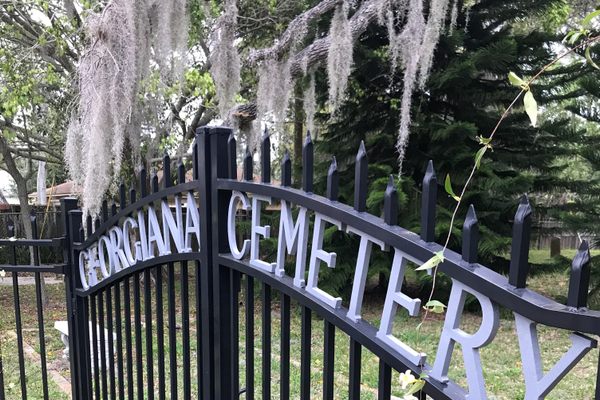Pelican Island
This small island was the first National Wildlife Refuge ever created in the United States.
In the late 1800s, the birds of Pelican Island were under threat from hunters, their numbers dwindling to the point of extermination. But thanks to the dedicated work of a local boat builder and some influential naturalists, Pelican Island was declared a national reserve, the first of its kind in the United States.
The protection of Pelican Island, which is located in the Indian River Lagoon east of Sebastian, Florida, began with just one man: Paul Kroegel, a local boat builder who took it upon himself to protect the island’s population of brown pelicans.
Armed with nothing but a small sailboat and a double-barreled shotgun, Kroegel guarded the pelicans against two growing threats: plume hunters, who were hunting them for their lucrative feathers to sell to the fashion industry, and sports hunters who were killing them just for fun.
Paul Kroegel soon gained the support of a number of influential ornithologists and naturalist organizations, including the American Ornithologists’ Union and the Florida Audubon Society. With their help, the plight of Pelican Island was brought to the attention of President Theodore Roosevelt, a man known as a strong conservationist.
On March 14, 1903, President Theodore Roosevelt signed an Executive Order creating the Pelican Island Reservation. It declared that Pelican Island “is hereby reserved and set apart for the use of the Department of Agriculture as a preserve and breeding ground for native birds.” In doing so, Roosevelt had created the nation’s first wildlife refuge, a landmark moment in the history of the American conservation movement.
At the time, the protected status was provided for the small five-acre mangrove island and the pelicans, egrets, herons, spoonbills and other birds that lived on it and in its immediately surrounding waters. It also provided protection for the plants and animals of Pelican Island.
Later, however, the protected status was extended into what is now known as the Pelican Island National Wildlife Refuge. This far larger refuge now protects 5,400 acres of terrestrial and marine ecosystems in Florida. This provides protection for more than 130 bird species, as well as the refuge’s seagrass beds, oyster bars, mangrove islands, salt marshes and maritime hammocks. Within the lagoon live West Indian manatees and sea turtles, both of which are endangered.
In 1963, Pelican Island was designated a National Historic Landmark due to its status as the first federal area set aside specifically to protect wildlife. Thirty years later, in 1993, the refuge was designated as a Wetland of International Importance. Paul Kroegel, the man who once guarded the island with a shotgun, would surely have been proud.
Today, however, the Pelican Island National Wildlife Refuge is up against budget cuts that have reduced staff numbers. While this won’t necessarily threaten the wildlife directly, it could bring about a decline in maintenance and a growing level of neglect.
Know Before You Go
Pelican Island is located in the Indian River Lagoon near Sebastian, Florida. The wider Pelican Island National Wildlife Refuge extends out from the island encompassing around 5,400 acres of protected waters and lands. Boat and kayak tours are offered by local tour operators. You can also contact the Indian River Chamber of Commerce for more information (call 772-567-3491). Because nesting birds are easily disturbed, visitors are not allowed to get too close or to disembark. Different birds make their homes in the refuge at different times of the year, so check in advance if you want to see a specific species.






















Follow us on Twitter to get the latest on the world's hidden wonders.
Like us on Facebook to get the latest on the world's hidden wonders.
Follow us on Twitter Like us on Facebook